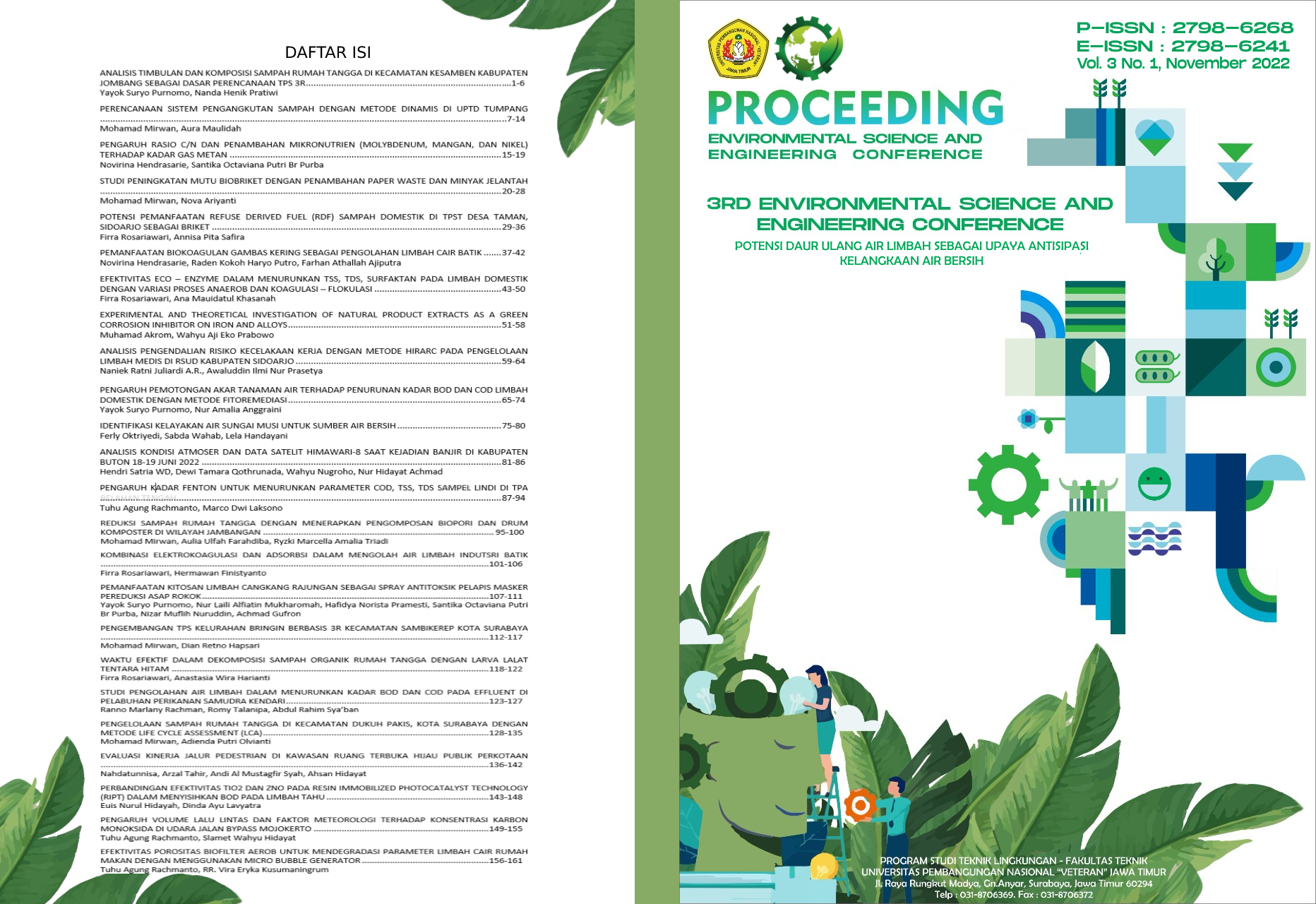Potensi Pemanfaatan Refuse Derived Fuel (RDF) Sampah Domestik di TPST Desa Taman, Sidoarjo sebagai Briket
Keywords:
Refused Derived Fuel (RDF) , moisture content , ash content , volatile content , calorific value , combustion rateAbstract
The average waste generated by the city of Sidoarjo is 1224 tons per day. The composition of plastic waste is 11% and food waste is 70.3%. The production of fuel derived from waste (Refused Derived Fuel / RDF) aims to convert some of the combustible waste in municipal solid waste into fuel. This research is an experimental study to determine the composition and type of the best adhesive made from a mixture of organic and inorganic waste with molasses (molasses), paraffin, and starch adhesives and compared with the existing briquette quality standards. This study analyzed the value of water content, volatile content, ash content, calorific value, and the rate of burning of briquettes using a descriptive method. From the research results, it is known that paraffin has a higher calorific value when compared to starch and molasses. The best calorific value in V3 is a mixture of 40 grams of inorganic waste and 80 grams of organic waste with paraffin adhesive. This composition produces a calorific value of 5218 kcal/kg, 1.04% water content, 17.34% ash content, 7.4% volatile content, and 0.138 gr/sec combustion rate. The value of water content, volatile content, and calorific value meet SNI 01-6235-2000. However, the value of the ash content not fulfilled
Downloads
Published
Issue
Section
License
Copyright (c) 2022 Firra Rosariawari, Annisa Pita Safira

This work is licensed under a Creative Commons Attribution 4.0 International License.













 ISSN 2798-6241
ISSN 2798-6241 





